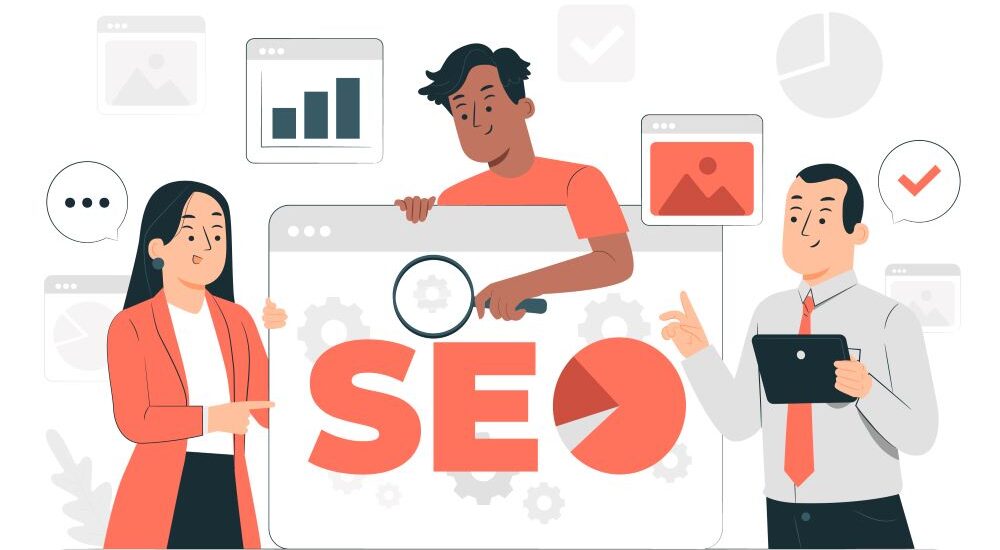In the digital age, the strength of a blog is the quality of its content, as well as its visibility. For platforms like majur.lv that focus on marketing, efficient shopping, and smart spending, it is crucial to learn search engine optimization (SEO) skills.
This article takes an in-depth look at advanced SEO strategies tailored specifically for banner ads, ensuring that your content reaches your target audience. From creating compelling headlines to using links effectively, we’ll cover everything you need for successful SEO.
Optimizing headlines – importance of well-designed headline
The title of a blog post is its first impression on search engines and potential readers. A well-optimized headline should be enticing and informative at the same time.
It should also contain key keywords and reflect the essence of the content. To ensure that headlines are correctly displayed on search results pages, they should ideally be less than 60 characters.
Tips for optimizing headlines:
- Use target keywords: The main keyword should be placed at the beginning of the headline to emphasize its importance.
- Be descriptive and concise: Make sure that the title clearly explains the topic, but is short.
- Arouse curiosity: Headlines that arouse interest or promise solutions usually show better click-through rates.

The role of Meta descriptions in SEO
Meta descriptions provide a summary of your copywriting blog post in search engine results. Though not a direct ranking factor, meta descriptions significantly affect user engagement. A compelling meta description can improve the likelihood of someone clicking on your article.
Creating effective meta descriptions:
- Include keywords: Use the target keywords evenly in the meta description.
- Don’t exceed 160 characters: This ensures that the entire description is visible in search results.
- Call to action: Encourage readers to click with phrases such as “Learn more” or “Discover how”.
Structuring content – use of headings and subheadings
Headings help to organize content hierarchically, making it easier for readers to navigate and for search engines to understand the main points of your message. Effective use of H1, H2, and H3 tags can significantly improve your SEO.
Guidelines for headings:
- Use H1 only for main headlines: Use the H1 tag only for the main headline. H2 and H3 tags should be used for subsequent subheadings.
- Include keywords: Include secondary keywords in subheadings for additional SEO leverage.
- Break up text: Use headings to break up large blocks of text, making messages easier to read and more engaging.
Image optimization – improving SEO with images
Images not only add to visual appeal but can also boost SEO. Optimising image file names, ALT text and ensuring fast loading speeds can improve your listing’s position in search engines.
Image optimization tips:
- Descriptive file names: Name image files with relevant, descriptive keywords.
- Alt text: Use alt text to clearly describe the image, naturally including keywords.
- Compress images: Make sure images are compressed to reduce loading time without sacrificing quality.

Using internal and external links wisely
Links are at the heart of SEO. Internal links help spread links throughout your site, while external links to trusted sites can boost your blog’s credibility.
How to use links effectively:
- Internal links: To keep readers engaged and increase page authority, link to other relevant posts on your site.
- External links: Use links to authoritative sites when referencing data or citing sources. Consider using SEO services as a source of technical SEO insight. The SEO technical audit prices of these services can vary depending on the work required.
Trending SEO strategies for 2024
Keeping up with SEO trends is crucial for maintaining the visibility and relevance of your content. In 2024, focus on voice search optimization, mobile-first indexing, and AI-generated content for enhanced interaction and engagement.
Introducing new trends:
- Voice search optimization: Optimize your content for conversational keywords and queries.
- Mobile optimization: Make sure your website is fully customized and mobile-friendly.
- Use AI tools: Use AI to analyze search trends and optimize your content accordingly.
Get ahead – manage your SEO
Readers need to master SEO skills to stay ahead in the competitive world of online marketing. By implementing these advanced strategies, you can ensure that your content reaches and engages a wide audience, driving conversions and improving your brand’s digital impact.
Remember that SEO is an ongoing process that requires continuous improvement and adaptation. Start by applying these techniques and continuously refine your strategy to meet the changing demands of both search engines and readers.







